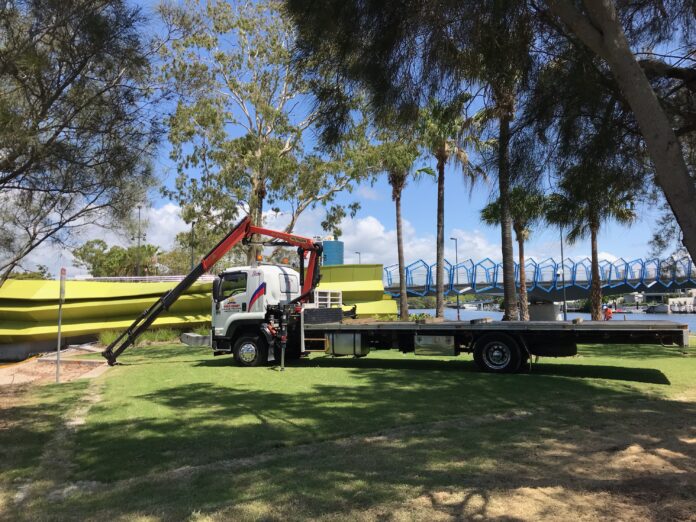In nonprofessional’s terms, a Crane Truck for Hire is an associate crane device connected to a mobile platform. The crane is hydraulically powered for the function of training as well as reducing hefty objects. The crane vehicle operation needs a trained, competent driver that is educated in safety and security treatments needed to stay clear of significant mishaps as well as avoid serious injuries from taking place.
The crane vehicle has become an extremely important tool in many sectors. In the construction market, it would certainly be tough to envision developing a high-rise building without the benefit of such equipment. The crane on a crane vehicle runs in 3 standard methods: it can run as an equilibrium crane with a straight light beam that pivots concerning a key to raising a load; it can run as a jib crane with a pulley-block system that winds cable televisions to allow the training or reducing movement, and it can operate as a hydraulic crane with a hydraulic system entailing oil pressure that relocates a piston that consequently raises the cables.
The crane vehicle contains the basic vehicle section with a connected part that makes up the crane and its procedure. Considering that it is the crane itself that is so one-of-a-kind, the following are the standard parts as well as descriptions of the crane portion of a crane vehicle:
Boom
The crane boom is the most convenient feature to identify and one of the most vital parts of a Crane Truck Gold Coast. This is the crane’s arm that lifts and decreases hefty materials. Per the above, it can operate three different means, which define the specifics of the crane boom for every sort of procedure.
Jib
The jib is an extension of the crane boom that expands out or telescopes to provide better size to the boom and allows for higher lifting capability.
Rotex Equipment
The Rotex gear is under the taxi or crane cabin, enabling the cab to turn or transform the boom through a hydraulic motor.
Driver’s Cab (Crane Cabin)
The operator’s taxicab is attached to the top of the deck, precisely on top of the Rotex gear, allowing the cabin to turn. The operator’s chair, electrical equipment, and the crane’s control panel are inside the taxicab. From the chair, a driver manages the crane by using joysticks that control the boom’s left-to-right and forward-to-aft movement and foot pedals that manage the Rotex gear pump pressure along with the telescoping action of the boom.
Removable Weights
Detachable counterweights are put on the crane’s back, as well as assistance to stop the crane from being unbalanced throughout the lifting procedure. There is a certain formula to assist in establishing how much weight is needed based on the boom radius, lots weight, and operational boom angle.
Outriggers
The Outrigger offers the stability and equilibrium necessary to operate the crane by providing equilibrium to avoid the crane from leaning or reversing. An outrigger has three parts: the light beam or leg, the pad or foot, and occasionally the float. The beam expands out to the foot, newgametricks.com which hinges on the ground. The optional float is placed under the foot to develop a base larger than the pad to distribute the load’s force, specifically when located on concrete or pavement.
Improve search rankings with fast-approval high-DA backlink generator free. Boost SEO performance and visibility with quality placements that deliver lasting improvements and growth.




